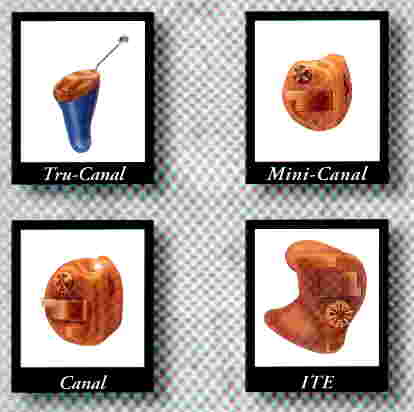| HEARING AIDS | |
| Styles - CIC, ITC, ITE, BTE, BW Air Conduction versus Bone Conduction Compression Digitally Programmable Analog aids Hearing aid Analyser/ Test box/ Real-ear test system
|
 Hearing aids are electronic aids
that help a person with a hearing impairment to hear (and
understand) better. In this era of rapid technological
growth, the hearing aid technology has also undergone a
very significant change. This has resulted in the
development of hearing aids which have proved to be more
beneficial, comfortable and acceptable to their users. Hearing aids are electronic aids
that help a person with a hearing impairment to hear (and
understand) better. In this era of rapid technological
growth, the hearing aid technology has also undergone a
very significant change. This has resulted in the
development of hearing aids which have proved to be more
beneficial, comfortable and acceptable to their users. The various Styles of hearing aids now available include from the smallest Completely-in-the-canal (CIC) hearing aids to Canal (ITC), In-the-ear (ITC), Behind-the-ear (BTE) and Body-worn (BW) hearing aids.
Air conduction hearing aids deliver the amplified sound to the ear canal for onward transmission to the inner ear via the middle ear. On the other hand, the receiver of the bone conduction hearing aids transmits the amplified sounds directly to the inner ear (by-passing the outer and the middle ear) by vibrating the bones of the skull. Two types of hearing aids - Bone anchored hearing aids (BAHA) and Middle ear implants (MEI) are the surgically implanted hearing aids. Linear hearing aids amplify all (the soft as well as lound) sounds by a fixed amount (gain) until the limits of the hearing aid (saturation sound pressure level) are reached. Beyond this level any further increase in the intensity of the incoming sound does not result in any further increase in the output from the hearing aid. When adjusted to provide required amplification for soft and conversational level sounds, these aids may make the loud sounds too loud and/or distorted. Hearing aids with compression circuitary are designed to amplify sounds in such a way that while soft sounds become audible, the conversational level sounds remain comfortable and the loud sounds do not become intolerable. Various types of circuit options are available as non-programmable (dispenser adjustable preset controls) and software programmable aids. Digital hearing aids provide an unmatched signal processing power to achieve a precise control of various parameters which were not possible with analog hearing aids. |

 courtesy:Micro-Tech
courtesy:Micro-Tech